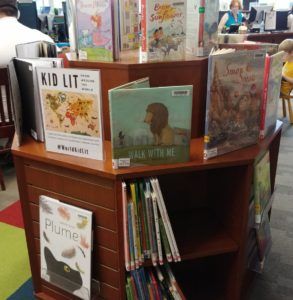We were inspired by Women in Translation Month, the fantastically successful initiative begun by Meytal Radzinski in 2014. Each August, #WiTMonth encourages readers and critics to engage women’s writing in translation. We thought September, as the back-to-school month, would be a good time to celebrate children’s literature in translation.
Why #WorldKidLit?
But: Why should young people read literature in translation? Ilan Stavans, the publisher of Yonder, said in an interview with WordsWithoutBorders that childhood is the time for translations. “It is precisely at a young age…when the strongest impact can be made in terms of exposing people to other cultures. A new sensibility can emerge.” Cheryl Robson, the publisher at Aurora Metro, talked about the importance of bringing great writing to English. “The proportion of children’s literature that is translated into English is extremely low, depriving English readers of some of the best children’s writers in the world today.” Many librarians are keenly aware of how important it is to diversify their collections. But diversity of stories doesn’t mean only reflecting populations inside one’s country. That doesn’t give children access to the world and all its various beauties. We need to also bring children diverse translations. And, indeed, this means not stocking only translations from France and Germany, but also from Indian languages, from Indonesia, from Egypt, from Brazil. It means not only books that conform to our expectations for what a children’s book can do. But also books that explode them.
What Does #WorldKidLit Month Do?
This year, our small group expanded to a wider one, with participating librarians, publishers, booksellers, reviewers, critics, and translators. The best part: seeing #WorldKidLit displays in libraries and bookshops around the U.S.! On the WKL website, we ran 34 different essays, interviews, lists, excerpts, and reviews about children’s literature from around the world. In 2018, we found participation jump in the twitter hashtags: #WorldKidLit, #WorldKidLitMonth, and #WorldKidLitChallenge, as well as participation in the WorldKidLit Facebook group.
Top 5 Posts: Celebration of the World
Our month’s top posts show a keen interest in diversifying collections. Of course, people were interested in what’s new. But they were also interested in learning about children’s books from Russia, Asia, and Latin America. Also, in how to diversify library collections. Our top five: New in 2017-18: Children’s Books Translated into English Sharing the Russian Stories and Poems that Shaped Translator Jane Bugaeva’s Childhood 10 Books: Vibrant & Fun Latin American Children’s Lit World Kid Lit: Learning ‘Other Ways to Discover Books for a Library Collection’ 2018 Asian Festival of Children’s Content: Pushing Back against ‘West is Best,’ Creating ‘Stories of Us’ WorldKidLit Month will be back again next year. We definitely need to reach out more to librarians, teachers, and booksellers. And also hopefully, next year, directly to kids!
